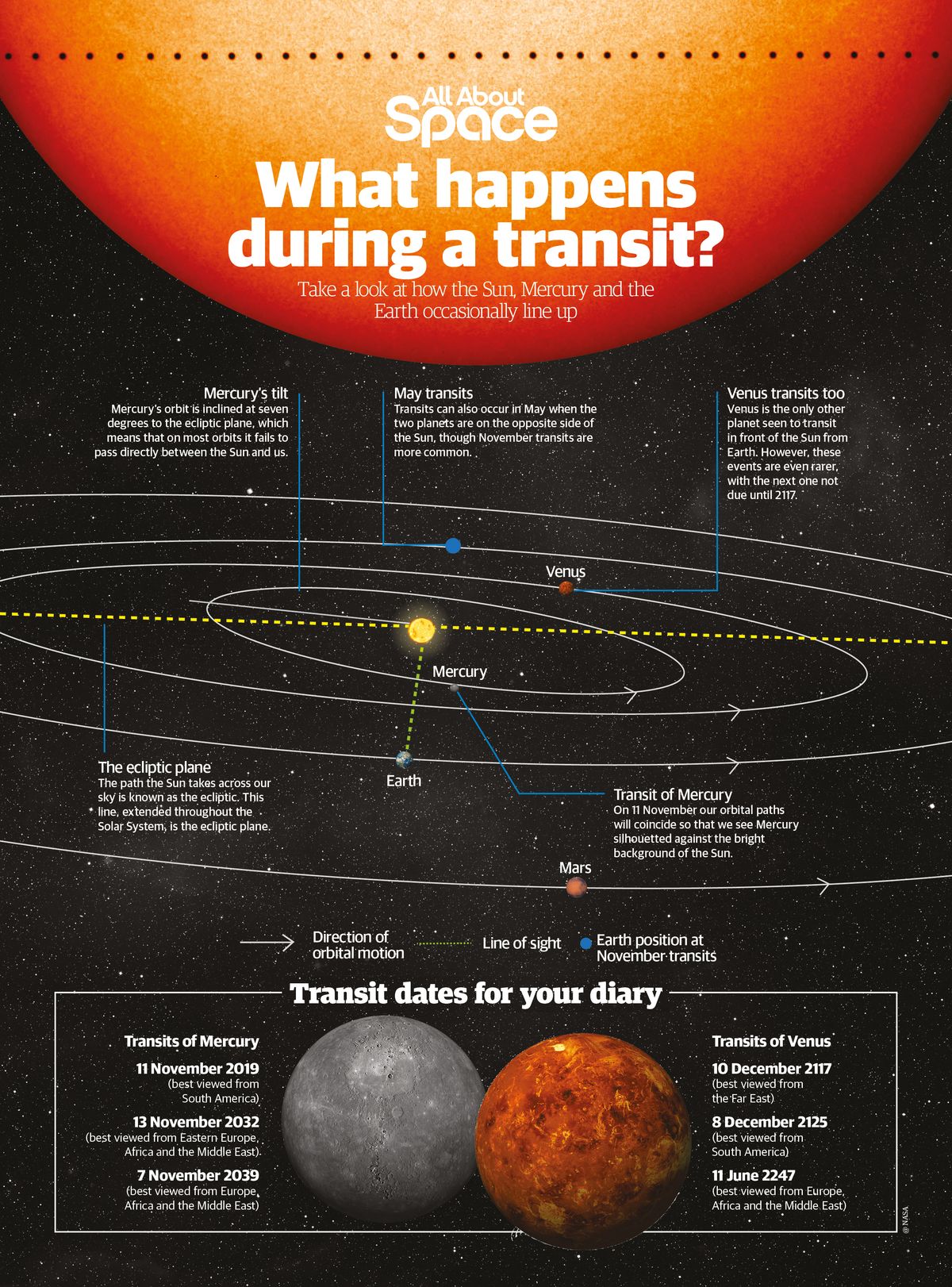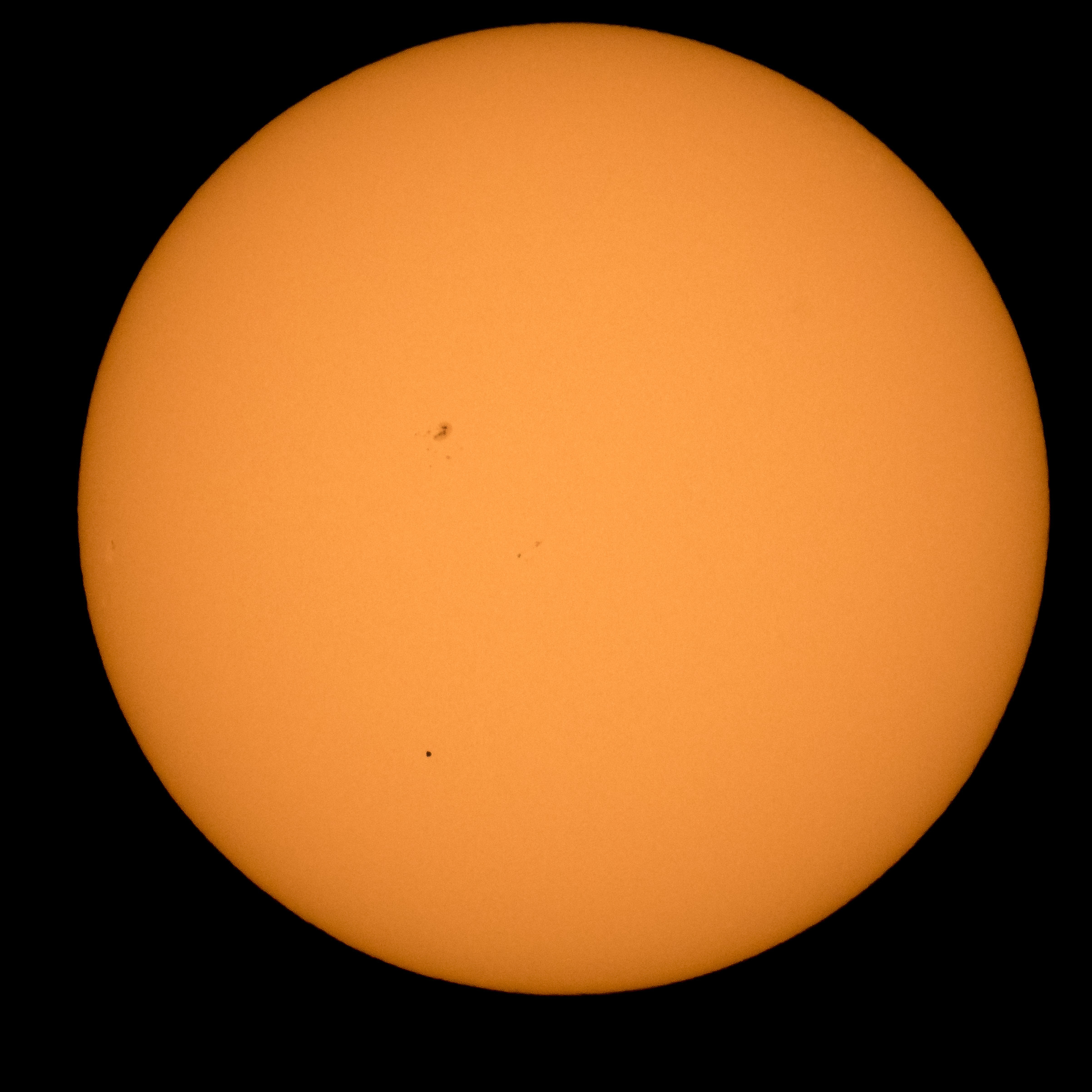Welcome to another post on my blog. In today's post, I am going to share you the rare event which is going to start tomorrow, the Mercury Transit.
Mercury, that smallest planet in the solar system is going to transit the sun tomorrow on 12 November at 6:02 AM. The last Mercury transit has happened in 2016. The next rare event is going to happen in 2032. We need to wait for 13 more years for the next one.
So this transit will last for 1 hour and 6 minutes. This transit will start at 5:58 AM. The midpoint of the transit is at 6:01 AM. The midpoint means the best time to see the transit. The end of the transit is at 7:04 AM. In Christchurch and the rest of New Zealand, the transit is near the max.
 |
| The 2016 Mercury Transit Credit: ScienceAtNASA |
After reading about the Mercury transit, you must be thinking, what is a transit? A transit is where one object crosses in front of the other object in space. An example of a transit is when the Moon passes between Earth and the Sun. The Moon is “transiting” the Sun. This is also called a solar eclipse. But the Moon isn’t the only object which can transit the Sun. We can see Venus when it passes between Earth and the Sun on its object. Because of how the orbits of Venus and the Earth line up, we can’t see the transit of Venus really often. This is a rare transit. transits occur in early May and early November. People don’t see a Mercury transit every year. The last transit of Venus was on 6 June 2012, we can’t see the next one until 2117!
If you want more information about the transit and what happens during a transit, read this infographic below from Space.com.

Let’s go back to the Mercury transit. If you want to see the transit, you need a telescope and solar filters to view the transit. Mercury’s diameter is only 1/194th of that of the sun, as seen from the Earth. That’s why, the master of the eclipse, Fred Espenak suggests using a telescope with a magnification of 50 to 100 times for observing the event.
If you don’t have any telescope or any tools to view the transit, you can try an online view of the transit. The Virtual Telescope is hosting a live observation. Or, watch the live stream from Time and Date.
 |
| Mercury Transit Credit: The Planetary Society |
The planet will look like a tiny, small mark travelling on the sun’s face as it passes through in front of the sun. Did you know that the Mercury transit occurs only 13 or 14 times per century? You know that the last transit was in 2016 and it won’t happen again until November 2032. What’s the best way to see and enjoy the event that, like a solar eclipse, it is observable during the day time.
Mercury transit will be visible from most of North America, all of South America, all of Africa, parts of Europe, Asia, Oceania and Antarctica. According to a map developed by Time and Date, sky gazers in cities like Montreal, New York and Sao Paulo will be able to see and observe the entire transit. People sky gazing in cities like Rome, Cario and Honolulu can view part of the transit.
Let’s go to New Zealand history about the Mercury transit. About 250 years ago Captain Cook’s astronomer observed a similar event. Stargazers will gather at Mercury Bay (Te Whanganui o Hei), where astronomer Charles Green and Captain Cook observed the planetary phenomenon in 1769. This transit will be visible across New Zealand, but only with a telescope. Astronomy societies across the country will be setting up star parties for people to observe the transit, according to astronomer and Otago Museum director Ian Griffin. Stardome astronomer Dr Grant Christie said November 9, 1769, happened to be clear weather, enabling Green a good view of the solar system's innermost planet. "They noted that Mercury seemed like a little disc against the sun and implied that it didn't have a big fuzzy atmosphere."
"On the morning of the 12th of November, as the sun rises, the planet Mercury will be transiting across the face of the sun," he said. "You won't be able to see it with the naked eye ... you need a special solar telescope.”
Sources: